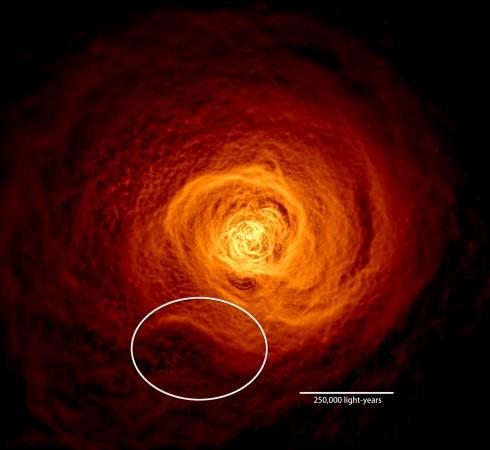
A stunning phenomenon has been observed in the nearby Perseus galaxy cluster - it's giant hot wave. It was detected with the help of NASA's Chandra X-ray Observatory with radio observations and computer simulations.
Also Read: NASA's SOFIA confirms a nearby star system is similar to our solar system
The scorching wave found is twice as large as our Milky Way galaxy and spanning around 200,000 light years. This discovery was made by a group of international researchers.
According to the scientists, this giant wave originated billions of years ago because the Perseus was grazed by a tiny galaxy cluster. This resulted in sloshing and disruption of huge gas supply in a massive volume of space.
"Perseus is one of the most massive nearby clusters and the brightest one in X-rays, so Chandra data provide us with unparalleled detail," lead scientist Stephen Walker at NASA's Goddard Space Flight Center in Greenbelt, Maryland elucidated, a NASA statement revealed.
"The wave we've identified is associated with the flyby of a smaller cluster, which shows that the merger activity that produced these giant structures is still ongoing," Walker added.
The largest gravity-bound bodies that prevail in our universe today are the galaxy clusters. Constellation Perseus is the host of the Perseus galaxy , after which the cluster is named.

Like all galaxy clusters, majority of the noticeable matter of this galaxy too transform into pervasive gas, which attains temperature as high as tens of millions of degrees and it radiates only in X-rays.
The findings included huge bubbles blown by the super-massive black hole present in NGC 1275, which is the central galaxy of the Perseus clusture. A mysterious concave feature called "bay" was also unearthed by the Chandra observations.
The findings will appear in the June 2017 issue of the journal Monthly Notices of the Royal Astronomical Society, its abstract is available online.









